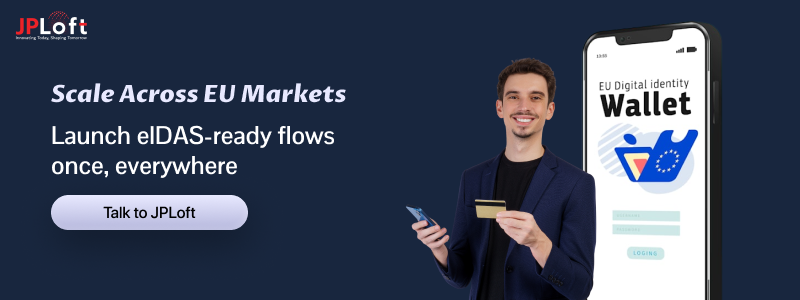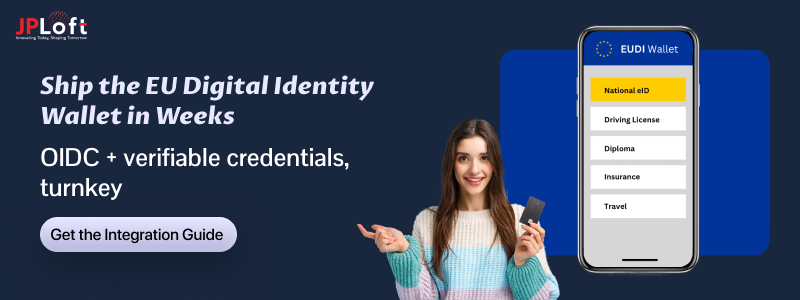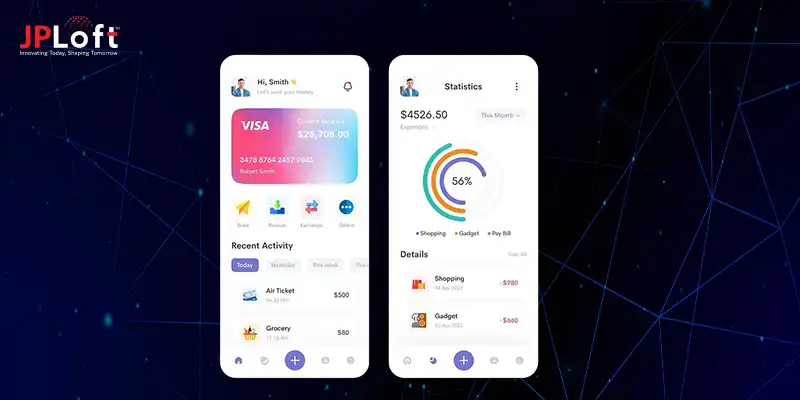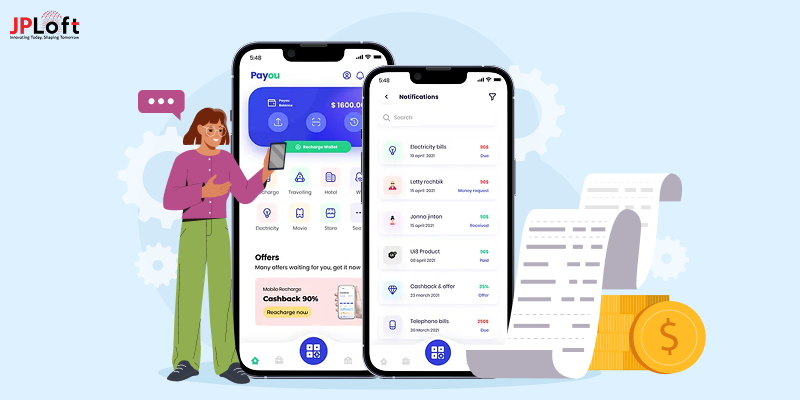Key Takeaways:
The EU Digital Identity Wallet launches in 2026, cutting user onboarding from minutes to seconds through instant identity verification
Businesses can expect 40-60% higher conversion rates and 70% lower KYC costs by eliminating manual document uploads and reviews.
Early integration now positions your platform ahead of competitors while ensuring compliance with eIDAS 2.0 regulations coming into force.
Imagine signing up for a new service and, instead of uploading a pile of documents, waiting for approvals, or fumbling through endless forms, all it takes is a tap.
That’s exactly what the EU Digital Identity Wallet delivers. Users can instantly prove what’s needed- like being over 18, a verified name, or a confirmed address- using just a PIN or biometric approval.
This small but powerful shift turns frustrating, slow ID checks into a seamless experience. It is high time to know it all.
This guide explains what the wallet is, why regulators and platforms are backing it, and how to map it into your funnel to boost conversions in weeks, not quarters.
What the EU Digital Identity Wallet Actually Is
The EU digital identity wallet is a secure, government-backed digital credential system that lets citizens prove their identity, age, address, and other attributes instantly without sharing unnecessary personal data.
Think of it as a digital version of your driver's license, but smarter and more privacy-focused.
Instead of scanning documents or typing in personal details, users can share just the specific information needed for each transaction.
Need to prove you're over 18? The wallet confirms "yes, this person is over 18" without revealing your actual birthdate.
Before the new EU rules under eIDAS 2, digital ID systems in Europe had their limitations: they were not universally accessible, often restricted to public services, and offered little cross-border functionality.
The EU Digital Identity Wallet changes all that.
It provides a secure, all-in-one digital solution for proving identity across the EU, signing up for a service online, sharing a verified document, or confirming an attribute such as age, without exposing unnecessary personal information.
Users remain fully in control, deciding exactly what to share and with whom. The result is a seamless, secure, and efficient experience that benefits both citizens and businesses.
► How It Works at a Glance
The magic happens through selective disclosure. When you need to verify something about a user, the EU digital identity wallet shares only what's absolutely necessary.
A user logging into your app would receive a request like "Please confirm you're an EU resident over 21." The wallet responds with a cryptographically verified "yes" without exposing their exact age, address, or other sensitive details.
This selective sharing is powered by advanced cryptographic protocols that ensure the data comes from legitimate government sources while protecting user privacy. The verification happens in real-time, usually taking less than 10 seconds.
► Who It's For
The system serves three main groups, each with different needs and benefits.
Citizens get seamless access to both government services and private platforms without repeatedly uploading the same documents or filling out lengthy forms. They control what information gets shared and can see exactly which services have accessed their data.
Businesses gain access to government-grade identity verification without the costs and delays of traditional KYC processes. You'll know instantly that a user is who they claim to be, dramatically reducing fraud while speeding up onboarding.
Public services can finally offer digital experiences that match citizens' expectations. Need to apply for a permit or access a government portal? The digital wallet eliminates form-filling and document uploads entirely.
► How the EU Digital Identity Wallet Cuts Onboarding Time
Onboarding is often the bottleneck in digital services—lengthy forms, document uploads, and manual verification frustrate users and lead to high abandonment rates. The EU Digital Identity Wallet solves this by turning identity verification into a near-instant, one-tap experience.
Instead of asking users to scan passports, upload utility bills, or fill multiple fields, platforms can request specific verified attributes—like “over 18,” verified name, or confirmed residency. The wallet provides cryptographically signed proofs from trusted government sources, instantly confirming the required data without exposing unnecessary personal information.
This selective disclosure reduces manual reviews, eliminates repeated document handling, and cuts onboarding time from minutes to seconds. For businesses, it means higher completion rates, lower KYC costs, and a smoother user experience. Users enjoy privacy, speed, and convenience, making the first interaction with your platform seamless and trustworthy.
The Timeline You Cannot Ignore
eIDAS 2.0 is in force. Member states ship wallets by September 2026. By 2027, large platforms in the EU must accept them. Your roadmap should match that clock.
1. 2024: Regulation in Force– What Changed
The eIDAS 2.0 regulation officially came into effect in 2024, setting the legal foundation for the EU Digital Identity Wallet. This wasn't just paperwork- it established binding requirements that will reshape how digital identity works across Europe.
Member states now have clear mandates to develop interoperable digital identity solutions. The regulation defines technical standards, privacy requirements, and cross-border recognition protocols that every wallet must follow.
For businesses, this means the rules of the game are now set. You can start planning integration strategies knowing the technical specifications won't change dramatically before launch.
2. 2026: Wallets Available– What to Prepare For
This is when things get real. EU member states must provide digital identity wallets to their citizens by September 2026. That's less than 18 months away.
The wallets will be available through government apps or certified third-party providers. Citizens can download them for free and immediately start using government-verified credentials for both public and private services.
If you're planning to integrate wallet support, now's the time to start technical preparation. The APIs and integration protocols are being finalized, and early adopters who begin testing will have significant advantages when wallets go live.
3. 2027: Private-Sector Acceptance Expands
By 2027, large digital platforms serving EU citizens must accept the EU Digital Identity Wallet for services that require identity verification. This includes major social media platforms, financial services, and e-commerce sites.
The regulation specifically targets platforms with over 45 million monthly active users in the EU. These companies will be legally required to offer wallet-based authentication alongside their existing methods.
This creates a massive network effect. Once major platforms support the wallet, user adoption will accelerate rapidly, making integration essential for any business competing in those ecosystems.
4. What Does This Mean for Your Roadmap This Quarter?
If you're running a European business or serving EU customers, the time to act is now. Waiting until 2026 means you'll be scrambling to catch up while competitors who prepared early capture market share with superior user experiences.
Start by auditing your current onboarding flow. Identify friction points where the EU Digital Identity Wallet could eliminate steps or reduce abandonment. Identify the user attributes that are essential for your needs compared to those you are currently collecting.
Begin conversations with potential integration partners and familiarize your development team with the emerging standards. The companies that move first will set the pace for their entire industry.
Top Benefits of EU Digital Identity Wallet for Businesses
Here’s the thing: the real benefits of the EU digital identity wallet for businesses show up where it hurts today-conversion, KYC cost, fraud, and compliance.
You swap slow document uploads for instant, verified claims and turn your most abandoned step into a one-tap win.
Let’s get to know the benefits here in a detailed section:
1] Faster Onboarding that Actually Sticks
Here’s the thing: sign-ups stall on photos, forms, and waiting.
Wallet-based selective disclosure turns that into a single tap with a PIN or biometrics. Users share only the attribute you ask for, and you skip manual review.
The benefits of the EU digital identity wallet for businesses start here:
-
Replace scans with one-tap attribute proofs
-
Prefill verified name and residency to cut keystrokes
-
Built-in strong auth via device biometrics
-
Reuse the same claims for upgrades and payouts
-
Track time-to-verify and step abandonment visibly
2] Lower KYC Cost Structure
As we said, this is beneficial for businesses.
Manual document checks burn cash and time. With government-signed proofs, unit cost drops from review minutes to API calls.
You store proofs instead of IDs, which reduces both storage needs and risk.
-
Move from manual review to low-cost API verification
-
Shrink data storage and breach exposure
-
Cut false positives and resubmission loops.
-
Consolidate point tools for age, address, and ID.
-
Route only true exceptions to small ops teams
3] Stronger Security with Less Friction
Passwords break. SMS codes leak.
Wallet login binds identity to device biometrics and cryptographic signatures. You cut fake accounts and promo abuse without slowing real users.
It is the rare upgrade where security rises and friction falls, a clear advantage of the EU Digital Identity wallet business.
-
Phish-resistant, passwordless authentication
-
Government-verified identity claims
-
Lower bot and mule account creation
-
Step up only for high-trust events.
-
Better AML signals for risk models.
4] Privacy by Design, Simpler Compliance
Ask for the minimum, get a signed yes, and stop hoarding personal data.
Selective disclosure and consent logs reduce GDPR burden and shrink breach blast radius.
For legal and risk teams, the benefits of the EU digital identity wallet for business are calmer audits and cleaner data maps.
-
Request attributes, not full documents
-
Built-in consent and sharing logs
-
Less sensitive data at rest
-
Easier DPIAs and audit trails
-
Purpose-limited storage by default
5] Cross-border Growth From Day One
eIDAS 2.0 establishes common rules, allowing a wallet proof issued in Berlin to be valid in Barcelona.
You ship one onboarding flow across EU markets and retire country-by-country hacks. The benefits of the EU Digital Identity Wallet for businesses include faster launches and less duplicate engineering.
-
One standard across member states
-
Unified UX for all EU users
-
Instant residency and age checks
-
Fewer geo-specific code paths
-
Lower expansion and maintenance costs
6] Measurable ROI Without Guesswork
You are not guessing. Track time-to-verify, completion at KYC gates, login success, and cost per verified user. Expect sharp lifts as users pick the fast lane.
When modelling ROI, the benefits of the EU digital identity wallet for businesses show up in revenue and OPEX.
-
Completion lift at verification steps
-
Cost per verified user trending down
-
Faster time to first transaction
-
Fewer support tickets per 1,000 sign-ups
-
Fraud losses and promo abuse have reduced.
7] Implementation playbook that ships
Start with wallet login as an option, not a replacement.
Use a certified partner, wire up sandbox proofs, and A/B against your current flow.
In two sprints, you can validate the business benefits of the EU Digital Identity Wallet with real users and real numbers.
-
Add “Sign up with EU Digital Identity Wallet” CTA
-
Keep legacy KYC as a fallback during rollout.
-
Instrument consent, failures, and retries
-
Pilot on one market or product tier first
-
Publish a metric dashboard for stakeholders.
You’ve seen the upside, which is best known before starting an eWallet business; now let’s cover the rules that keep it safe and legal.
Compliance Basics: Build Trust, Minimize Data, Pass Audits
Here’s the thing: eWallet app compliance gets easier the moment you treat compliance as infrastructure, not a hurdle.
The EU Digital Identity Wallet flips KYC from document hoarding to verified proofs you can validate and log.
You reduce exposure, keep auditors happy, and give users real control without slowing the product.
Here are some compliances that need to be followed:
-
Ask only for attributes you need. Selective disclosure and purpose limitation cut exposure, simplify DPIAs, and align your data map with GDPR’s minimization rules from day one.
-
Use certified wallet integrations. You validate cryptographic signatures, not documents, reducing manual review, false positives, and inconsistent decisions across markets while staying inside eIDAS 2.0 technical guardrails.
-
Log consent and sharing events. Users see what was requested and when. You gain clear audit trails for regulators, faster incident response, and fewer disputes about data use.
-
Store proofs, not payloads. Keep hashed identifiers and signed claims instead of images, birthdates, and addresses; reduce breach blast radius, retention obligations, and right-to-erasure complexity across your systems.
-
Plan for step-up assurance. Set policies for higher-risk actions like payouts, limit lifts, and sensitive data access, so your app requests stronger claims without rewriting flows or confusing users.
-
Instrument failure paths. Gracefully handle timeouts, partial claims, and wallet unavailability; fall back to legacy KYC only when necessary, and flag events for compliance review with standardized codes.
Practical Use Cases of EUDI Wallet
Here’s the thing: the EUDI Wallet turns identity checks into quick, consented taps.
Users share only what’s needed, businesses get verified attributes in seconds, and audits stay tidy.
Built on the European Digital Identity framework, it’s practical, portable, and privacy-first.
If you’re exploring Wallet as a Service, this is where it shines.
You can slot verified credentials into existing flows without heavy rewrites, keep proofs for regulators, and move faster across borders with one wallet experience.
1. Instant KYC and Account Onboarding
Traditional eWallet app challenges around user verification can be removed with a two-tap verification flow that cuts friction and keeps user trust high.
How it helps:
-
Verified attributes on demand: Request name, DOB, or address from trusted issuers via the EUDI Wallet.
-
Less abandonment: No photo uploads or back-and-forth emails, so users finish the journey.
-
Audit-ready by design: Consent receipts and issuer details align with eIDAS (eIDAS) controls.
-
Developer-friendly: Map claims to your KYC fields and log results for compliance reviews.
2. Age-Restricted Products And Sign-ups
Sell responsibly while protecting user privacy.
How it helps:
-
Minimal data, maximum assurance: Ask for “over 18” instead of full birthdates.
-
Faster approvals: Instant checks reduce manual reviews and weekend queues.
-
Cleaner records: Proofs are signed and time-stamped for easy audits.
-
Privacy win: Users share just enough to qualify, nothing more.
3. eSignatures and Contracts That Hold Up
Close deals the same day with signatures bound to verified identities.
How it helps:
-
Stronger signatures: Pair identity proofs with qualified e-signatures for higher legal weight.
-
Shorter cycles: No courier, no scans, fewer redlines about “who signed.”
-
Clear traceability: Store signer attributes and timestamps to speed up dispute resolution.
-
Global-ready: Aligns with the EUDI system so your signature flow scales across the EU.
4. Telecom, Utilities, and eSIM Activation
Activate services fast with verified identity and address.
How it helps:
-
One tap, live service: Collect validated claims to turn on lines or meters quickly.
-
Lower fraud: Strong identity checks reduce SIM-swap attempts and false accounts.
-
Happier support teams: Fewer manual edits and cleaner records after activation.
-
Easy to extend: Add payment or residency claims when policies require them.
5. Cross-border Access for Travel and Public Services
Make moves between countries without starting from scratch.
How it helps:
-
Reuse identity: Access universities, healthcare, or benefits with the same wallet.
-
Faster check-ins: Pre-share attributes for hotels or rentals to skip desk paperwork.
-
Consistent experience: One UX tied to the European Digital Identity framework.
-
Scalable foundations: A single ruleset you can maintain as regulations evolve.
Thinking about growth beyond a single feature set? If you plan to start an online eWallet Business, a compliant identity layer is the safest place to begin.
And if you’re gearing up to create an eWallet app, anchoring onboarding, age checks, and signatures on the EUDI rails keeps your product fast, trusted, and ready for scale.
Investors’ View: What Signals Matter
Identity is infrastructure. When onboarding drops from minutes to seconds and risk controls stay intact, growth compounds.
The European digital identity framework turns proof-of-person into a product feature, not a bottleneck, one that travels across markets and audits cleanly.
Here’s how investors evaluate it:
-
Conversion that sticks: Faster identity checks lift completion rates and shrink CAC payback. Trackables: start-to-KYC time, verified-user conversion, and drop-off reduction post-launch.
-
Compliance by design: Attribute sharing, consent receipts, and issuer proofs make app compliance measurable and repeatable; align flows with eiDas to de-risk scale.
-
Security that reduces fraud: Cryptographically signed claims raise the bar for impersonation and account takeovers, strengthening eWallet app security without adding friction.
-
Scale across borders: Build once and expand with common rails in the EUDI system; the same patterns drive onboarding, age checks, and signatures in new EU markets.
-
Integration cost and timeline: Use standard protocols and SDKs to fit your eWallet app tech stack; investors want clear estimates for first flow, full rollout, and ongoing maintenance.
-
Privacy that builds trust: Share “just enough” using the EUDI Wallet (for example, over-18 instead of full DOB). Less data stored, fewer tickets, happier regulators.
-
Data leverage after go-live: Verified attributes improve risk models and personalization- practical AI in finance that boosts retention, CLV, and fraud detection without guesswork.
How JPLoft Can Be Your eWallet Partner?
Did you know the global digital wallet market is expected to surpass $30 trillion in the next few years? That’s not just growth- it’s a gold rush for anyone ready to step in with the right product.
But here’s the catch: building an eWallet that’s secure, scalable, and compliant isn’t easy. That’s where partnering with the best eWallet app development company comes in.
At JPLoft, we create more than apps—we craft fintech solutions designed for investors who want speed, compliance, and profitability. From instant onboarding to AI-driven fraud detection, our eWallets are built to win markets.
How Investors Can Leverage This:
-
Faster go-to-market
-
Compliance aligned with eIDAS
-
Scalable global-ready framework
-
AI-powered personalization & retention
-
Future-proof cross-border capabilities
With JPLoft, your app isn’t just built—it’s positioned to lead.
Conclusion
The shift to digital identity is no longer optional- it’s the future of trust, compliance, and growth.
The EU Digital Identity Wallet will redefine onboarding, verification, and user privacy across industries, and businesses that act early will reap the biggest rewards.
By partnering with JPLoft, a leading app development company, you don’t just get an app; you get a future-proof solution designed to scale, secure, and comply.
Whether you’re an investor or founder, now is the time to build with confidence and lead the next wave of fintech innovation.
FAQs
It’s a secure, government-backed app that allows citizens to instantly verify identity, age, address, or other attributes while sharing only the minimum required data.
It cuts onboarding time, reduces KYC costs by up to 70%, lowers fraud, simplifies compliance, and boosts conversion rates with smoother user flows.
Early adopters gain faster market entry, compliance alignment with eIDAS 2.0, and a competitive advantage before mandatory adoption by 2027.
Yes—privacy by design ensures users share only necessary data, backed by government-grade verification, making the experience both safe and transparent.
The wallet allows users to share only the verified attributes needed- like age, name, or address- instantly, without uploading documents. This selective disclosure turns minutes of form-filling and manual checks into a few seconds, reducing drop-offs, lowering KYC costs, and creating a smoother experience for both users and businesses.













Share this blog